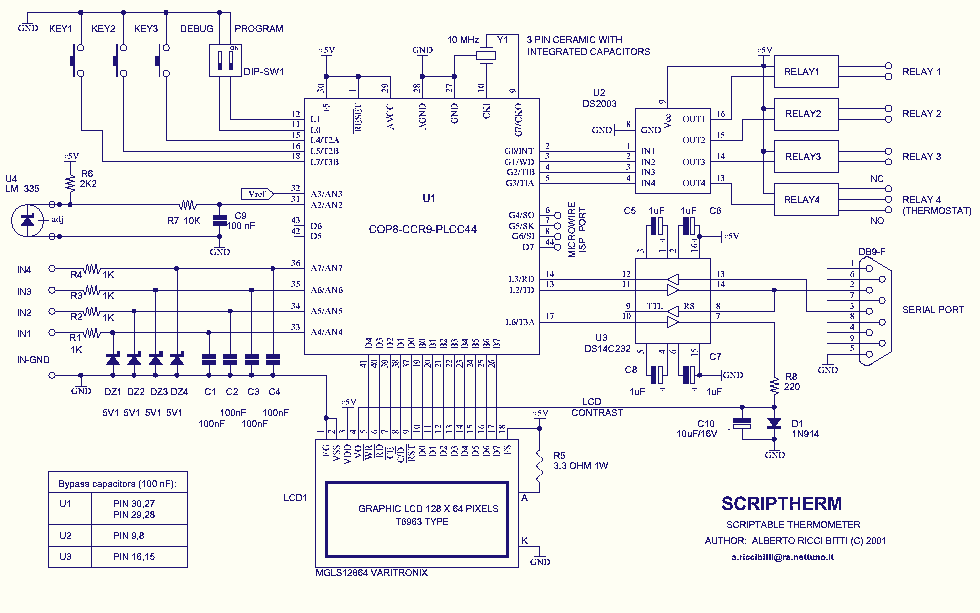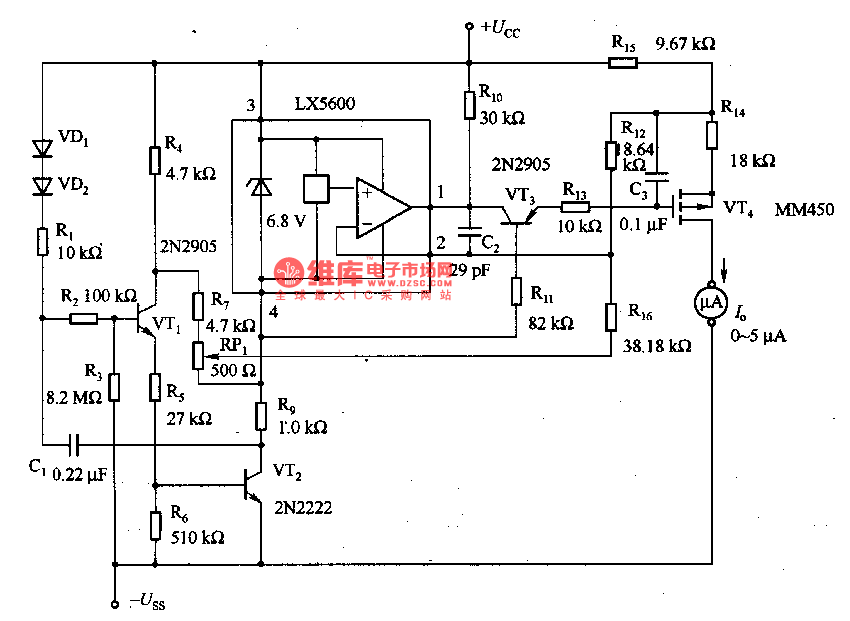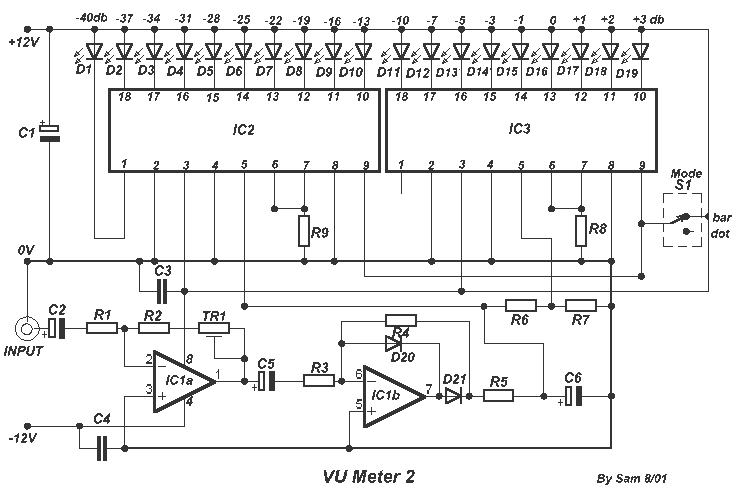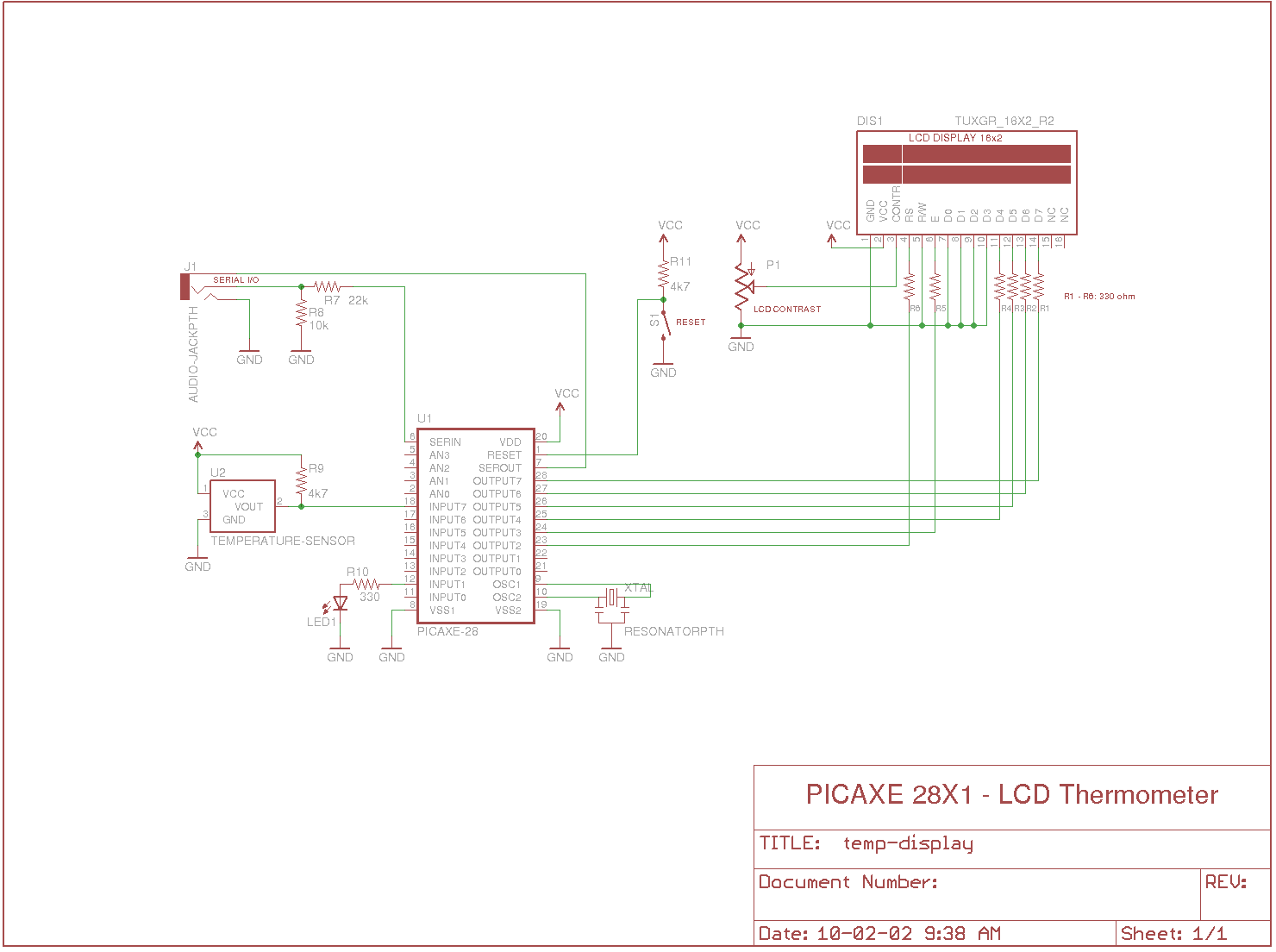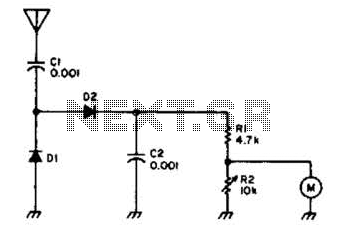
decibel meter
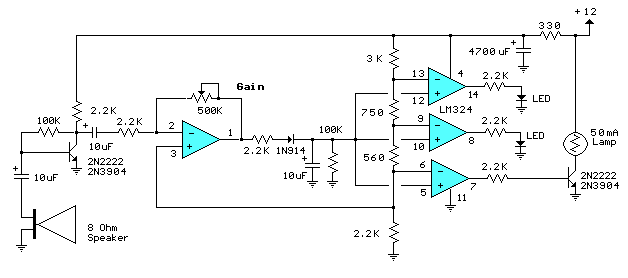
The circuit responds to sound pressure levels ranging from approximately 60 to 70 dB. An 8-ohm speaker captures the sound, which is then amplified by a transistor stage and one section of an LM324 operational amplifier. A dynamic microphone may also be employed, although the speaker exhibits greater sensitivity. The remaining three sections of the LM324 quad op-amp function as voltage comparators, controlling three indicator LEDs or incandescent lights spaced about 3 dB apart. An additional transistor is required for the incandescent lamps, as illustrated with the lower lamp.
The described circuit operates within a specific sound pressure level range, utilizing an 8-ohm speaker as a transducer to detect sound waves. When sound waves hit the speaker, it converts acoustic energy into electrical signals. These signals are then amplified by a transistor stage, which enhances the signal strength before it is fed into one section of the LM324 quad op-amp. The LM324 is a versatile operational amplifier that can amplify, filter, and perform various signal processing tasks.
In this application, the LM324 is configured to perform as a voltage comparator. The output of the op-amp is compared against predetermined voltage thresholds that correspond to the sound pressure levels of interest. The three remaining sections of the LM324 are set up to trigger different output states based on the input signal level, effectively creating a multi-level sound level indicator. Each comparator output activates an indicator LED or incandescent lamp when the input sound level exceeds the defined thresholds, spaced approximately 3 dB apart. This provides a visual representation of the sound intensity.
To drive the incandescent lamps, which require more current than the LM324 can provide directly, an additional transistor is included in the design. This transistor acts as a switch, allowing the op-amp output to control a larger current flowing through the lamp, thereby illuminating it when the corresponding sound pressure level is detected. The overall design ensures that the circuit is sensitive and responsive to varying sound levels, making it suitable for applications where sound monitoring is essential.The circuit below responds to sound pressure levels from about 60 to 70 dB. The sound is picked up by an 8 ohm speaker, amplified by a transistor stage and one LM324 op-amp section. You can also use a dynamic microphone but I found the speaker was more sensitive. The remaining 3 sections of the LM324 quad op-amp are used as voltage comparators and drive 3 indicator LEDs or incandescents which are spaced about 3dB apart.
An additional transistor is needed for incandescent lights as shown with the lower lamp.. 🔗 External reference
The described circuit operates within a specific sound pressure level range, utilizing an 8-ohm speaker as a transducer to detect sound waves. When sound waves hit the speaker, it converts acoustic energy into electrical signals. These signals are then amplified by a transistor stage, which enhances the signal strength before it is fed into one section of the LM324 quad op-amp. The LM324 is a versatile operational amplifier that can amplify, filter, and perform various signal processing tasks.
In this application, the LM324 is configured to perform as a voltage comparator. The output of the op-amp is compared against predetermined voltage thresholds that correspond to the sound pressure levels of interest. The three remaining sections of the LM324 are set up to trigger different output states based on the input signal level, effectively creating a multi-level sound level indicator. Each comparator output activates an indicator LED or incandescent lamp when the input sound level exceeds the defined thresholds, spaced approximately 3 dB apart. This provides a visual representation of the sound intensity.
To drive the incandescent lamps, which require more current than the LM324 can provide directly, an additional transistor is included in the design. This transistor acts as a switch, allowing the op-amp output to control a larger current flowing through the lamp, thereby illuminating it when the corresponding sound pressure level is detected. The overall design ensures that the circuit is sensitive and responsive to varying sound levels, making it suitable for applications where sound monitoring is essential.The circuit below responds to sound pressure levels from about 60 to 70 dB. The sound is picked up by an 8 ohm speaker, amplified by a transistor stage and one LM324 op-amp section. You can also use a dynamic microphone but I found the speaker was more sensitive. The remaining 3 sections of the LM324 quad op-amp are used as voltage comparators and drive 3 indicator LEDs or incandescents which are spaced about 3dB apart.
An additional transistor is needed for incandescent lights as shown with the lower lamp.. 🔗 External reference
